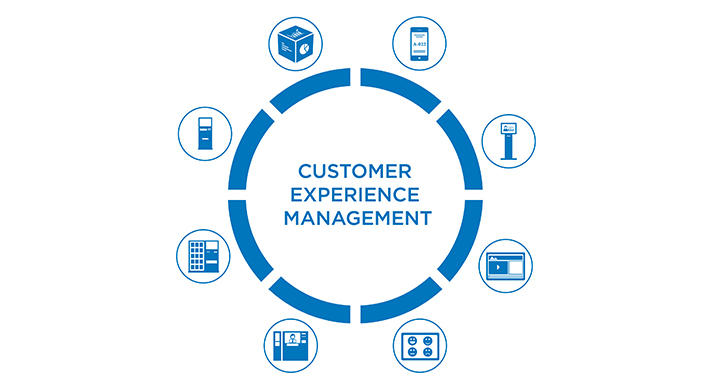
Consider content strategy instead of content-based. This is a more effective marketing approach for your company. Both these concepts are compatible and require content creators to create engaging, relevant and valuable content that will satisfy your customers' wants and needs. They can be combined to enhance your brand image and increase profits. Content marketing can double your company's profits if used correctly.
Content strategy
Each approach has its own advantages, but you should prioritize one method over another if your goal is to create content that's successful. A content strategy should focus on the needs of your target audience and analyze the attributes of loyal customers, power users, and evangelists. It should also identify the customer personas. This will help you create a strategy that meets these needs. A content calendar does not guarantee success.
There are many different things between content marketing and content strategy. One involves an overarching structure and roadmap for your content creation efforts, while the other deals with specific tactics. Although they overlap, there are some key differences between content strategies and marketing. A content strategy serves to reach your target audience. While a content marketing strategy targets your buyer persona, it is a content strategy. Both are intended to retain and attract customers.

Content marketing
Many people confuse content marketing with content strategy. Content strategy is a plan that encompasses all aspects of content marketing. It directs the creation and dissemination of content, and helps map out business goals. Content marketing is one subset of content strategy. It's the "how" of content marketing. Both strategies are complementary and can be used together. However, there are important differences between the two. Let's discuss both strategies in more detail.
These concepts are similar but they have a distinct difference in the nature of their respective goals. Content marketing focuses primarily on the creation and publication of content assets. Content strategy is about defining the content's key objectives and its strategy. It is different to content planning, which has a more general approach. A strategy should be developed before content creation can begin. But, content strategy is not the same as content marketing.
A story is told
In many ways content marketing looks like storytelling. A content strategy typically involves the creation of a product, service, protagonist, climax, and resolution. To be successful, you must first identify the story’s most important elements and create compelling narratives. You also need to know your audience. To begin, create buyer personas and know your audience's pain points.
Think about how your article adds to your overall brand story. This will help you make your arguments stronger. A story must be relatable, even if it is about products or services. Good stories should be relatable. It should be relatable, human, and relevant to the audience. The content should also contain a clear CTA. Your story should be about a brand's product/service. Make sure you are a hero who can help solve their problems.

A culture of content
For content marketing to scale, it is essential to create a culture of content. Content marketing requires four steps for successful scaling: audience-centric, process-oriented, built-to-measure, and scaled. In order to create a content culture, you must establish a top-level role that controls the strategy and provides processes for all content team members. This role will be responsible for creating and engaging with audiences.
The Culture of Content starts with the obsession of the customer. A company's content is more shared by customers than it creates. Content that companies champion is more valuable than the rest. In short, effective marketing becomes answering buyer questions. It starts with understanding your brand's purpose, and then letting employees know what their role is in it. Then, you can start measuring and optimizing content strategies quickly based on customer insights.
FAQ
How much does content marketing cost?
Pricing for content marketing depends on whether you want to outsource or do it yourself. Outsourcing content marketing services is usually less expensive than hiring full-time staff, and allows you to scale up quickly when you require more coverage.
According to HubSpot research, outsourcing content production costs around $5 per lead generated (for B2B companies) compared to $22 per lead generated (for consumer brands).
But, you don't have to pay a lot of money for content marketing tools. These can be used to create high-converting content.
There are many ways to create optimized content for search engines like Google and Bing. For example, you can write original articles, guest post on blogs, curate content from other websites, and repurpose existing materials.
If you choose to produce your own content, then you must learn how to make great content. However, once you are proficient in this skill, it will be easy to produce content.
You can start by creating simple landing pages using WordPress and then move on to building out your site. By doing this, you can gradually build up a portfolio.
Are there any restrictions on linking to content from other websites?
Yes! It's known as link building. It's a great way increase traffic to your site by linking to other sites. Be sure to only link to trusted sources.
What are the benefits of content marketing?
The creation of high-quality, relevant content can be used to increase sales and lead generation. Content marketing is a constant stream of quality content that can help promote products and/or services. Content marketing helps increase brand awareness, trust and engagement among potential customers. Content marketing can also create a positive image of your company.
Why is Content Marketing important?
According to HubSpot, "The average person spends nearly two hours each day consuming some form of content--on social media, in their newsfeeds, while watching TV, reading magazines, browsing websites, listening to podcasts, and more. That's a lot spent on content!
How long should my content marketing be lasting?
It all depends on what your goals are. Some businesses are looking for short-term results; others are looking for long-term growth. We recommend starting with three consecutive months of content creation, then reviewing the results after that period.
What is the value of content marketing?
Content marketing is a key part of any online strategy. It is also a very effective way to increase brand exposure. Content marketing isn't just for customers. It makes your brand stand out from others.
Content marketing involves creating valuable content that people want. Successful companies use content marketing to engage their target audience.
Statistics
- Seventy-two percent business to business (B2B) (mailchimp.com)
- We found that 40% of businesses don't have a documented strategy yet. (semrush.com)
- Companies that use content marketing see approximately 30% higher growth rates than businesses not using it. (mailchimp.com)
- According to the Content Marketing Institute, 70% of B2B marketers and 86% of B2C marketers surveyed use content marketing in some form or other. (criteo.com)
- Out of the 1,500 marketers we surveyed for our State of Content Marketing report, 78% who felt their content marketing strategy was exceptionally effective in 2021 had documented their strategy. (semrush.com)
- According to research compiled by Coschedule: Companies that publish 16+ blog posts a month get as much as 3.5x as much traffic as those that publish 0-4 posts a month. (criteo.com)
- In fact, would pay more for a better customer experience, and 86% of B2B buyers would pay more. (neilpatel.com)
- Progress indicators (0–100%) allow each team member to see how attainable each goal is and understand what remains to be accomplished. (semrush.com)
External Links
How To
How can you build a content strategy?
First, determine what type of content your clients want. Once this is defined, it's time to start creating content. This could involve creating an editorial schedule and planning where these pieces are going to come from. Content should always have a purpose. It doesn't matter if it's blog posts, social media updates, e-books, or anything else, but they should all serve a single goal.
Once you've decided on the type of content that you want to create, it's important to determine who your target audience is. So who are they interested in, and why would they care about whatever you're offering them?
Next, you need to identify your target market. Then, find ways to communicate with them. Social media platforms are an excellent way to connect with people, but other options exist, such as videos, podcasts, webinars, etc.
Next, you need to decide how you will communicate your message with your market. Then you need to determine what topics you'd like to cover. This will help you to understand why you are writing the content. What problem does this solve? Are they satisfied? It will make their lives easier.
Once you have an idea of the content you are writing, you can start to think about what you want to share. What do you want? On current events? On specific products and services? The answer to this question defines your focus.
Finally, after answering all those questions, it's the right time to combine everything in one package.
It is important to make sure that each piece of content you create serves its intended purpose. It is important to not waste time or energy. Therefore, you should ensure that every piece of content you create has quality.
Remember that great content marketing strategies have many moving parts.